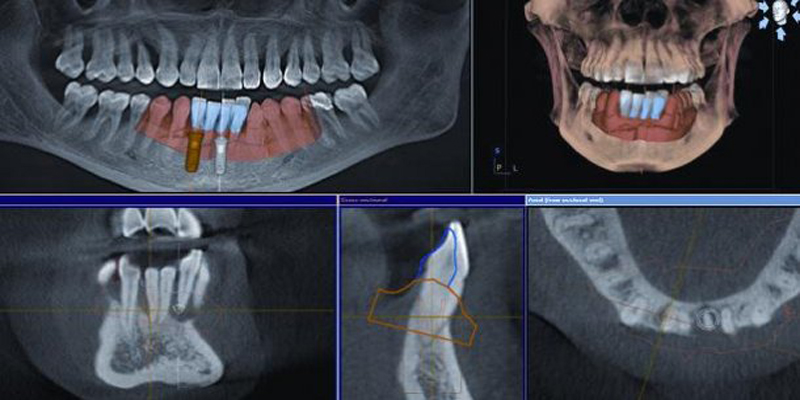 Ridge Preservation for Implant placement.
Ridge Preservation for Implant placement.
When you need to have a tooth or teeth extracted—whether it be due to decay, abscess, gum disease or injury—it is usually in your best interest to do so in a manner which preserves as much of your underlying jawbone as possible. From the time the teeth are removed, significant degeneration of the surrounding bone begins to take place. The amount of shrinkage is unpredictable. Many times the amount of remaining bone shrinks rapidly at first, followed by a more slowly progressing shrinking that occurs over the years afterwards. This shrinking is a natural process, but it is an undesirable result of tooth removal.
To minimize the rapid shrinking of bone, a bone graft can be placed in the socket at the time of tooth removal. This type of bone graft is straightforward and produces little or no discomfort. A ridge preservation bone graft can often prevent the need for major bone grafting later on. Therefore, a ridge preservation bone graft helps to minimize the need for treatment with major bone grafting in the future.
The slowly progressive shrinking that happens over time is really only prevented by replacing the missing tooth with a dental implant. The pace of this “slow” bone loss is difficult to predict and is influenced by the genetics of the patient.
Example of the bone loss that can occur when ridge preservation bone grafting is not performed. Until a ridge augmentation bone grafting procedue is performed a dental implant can not be placed. A dental bridge replacement would appear unnatural due to the indentation in the tissue.
WHAT HAPPENS WHEN A TOOTH IS REMOVED?
There is a special type of bone surrounding your teeth. This bone is called alveolar bone, and exists solely to support your teeth. When a tooth is lost for whatever reason, the body's natural response is to begin resorbing or getting rid of the bone in the area because it is no longer needed to hold the tooth in place. This "melting away" of bone occurs in two dimensions. The first is loss of horizontal width caused by the collapse of the bone surrounding the socket. This makes the remaining ridge narrower than when the tooth was present. The second is a loss of vertical height. This makes the remaining bone less “tall.” This process is faster in areas where you wear a partial or complete denture.
WHY IS IT IMPORTANT TO PRESERVE THE BONE?
You will have several choices of how you can replace the newly missing teeth. All of the options rely on bone support and bone contour for the best function and esthetics. Here is a list of the possible options:
You may choose to replace your missing teeth with dental implants. These are root-shaped supports that hold your replacement teeth. The more bone support you have, the stronger the implant replacements will be. In some cases, the bone can degenerate to a point where implants can no longer be placed without having more complex bone grafting procedures to create the necessary support. Obviously, preventing bone loss is much easier than rebuilding the bone later.
You may choose to replace the missing teeth with a “fixed bridge.” This is a restoration that is supported by the teeth adjacent to the missing tooth space. The replacement tooth (or pontic) spans across the space. If the bone is deficient, there will be an unsightly indentation in the gums and jawbone under the pontic that will trap food and affect your speech. In the front of the mouth, filling the space in where a vertical loss of bone has occurred results in a crown that appears too long when compared with the adjacent teeth.
Other replacement alternatives include removable partial or full dentures. These often perform better with more supporting bone.
HOW CAN THE BONE BE PRESERVED?
There are two important phases in retaining your alveolar ridge during and after the tooth extraction. Not all extraction techniques are the same, some can be rather destructive of the bone around the roots. Our dentists use the most careful techniques to extract the teeth while preserving as much bone as possible. Second—and key to preventing the collapse of the socket—is the addition of bone replacement material to the extraction socket. After the tooth is extracted, the socket will be packed with a bone replacement material and covered with a small barrier material and/or sutures. Early on, the grafting material will support the tissue surrounding the socket, and in time will be replaced by new alveolar bone. Postoperative recovery following this procedure is usually no more complicated than that following the removal of the tooth without ridge preservation.
Although the bone created by socket grafting supports and preserves the socket, it will not do so indefinitely. Placing dental implants four to twelve months after the extraction and socket grafting will provide the best long-lasting support for preserving your jawbone and allow you to function as before. Otherwise the graft may “melt away” or resorb over time.











